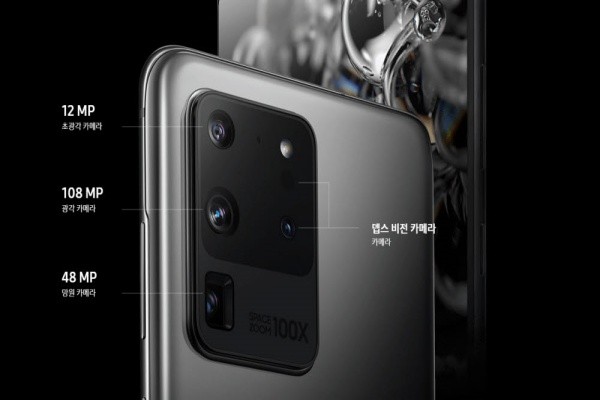It has been reported that Samsung Electronics does not plan to integrate ToF (time of flight) technology into its next strategic smartphone.
According to the industry on Sunday, it has been reported that Samsung Electronics has decided not to integrate the technology into the ‘Galaxy S22’ that is expected to be released in the first quarter next year. Although the company had been looking into the possibility, it recently decided not to pursue the possibility.
One representative from the industry who is familiar with Samsung Electronics’ situation with smartphone development said that Samsung Electronics decided not to integrate the technology into its next strategic smartphone as consumers’ responses towards the company’s camera system that is not integrated with the technology are not so bad.
ToF technology calculates a distance based on the time it requires for a light to return back to the camera after it reflects back from the subject and recognizes the subject’s dimension, spatial information, and movement.
Samsung Electronics applied the technology starting from the Galaxy S10 that was released in the first quarter of 2019. It integrated the technology for the Galaxy Note 10 that was released in the same year and the Galaxy S20 that was released last year as well. As number of smartphones that are integrated with the technology started to increase, the company also increased number of partnering companies that make ToF sensor modules.

However, the company decided to remove the technology from the Galaxy Note 20 that was released in the fall last year as the technology’s level of use did not meet its expectation. While it expected that the technology would boost effects of its smartphone cameras as the technology is capable of 3D sensing, the technology remained as a means of assisting picture-taking due to lack of ‘killer applications’ that can induce use of technology from consumers.
However, Samsung Electronics decided to look into using the technology once again when Apple applied the technology for the iPhone 12 that was released in the fall last year. Ultimately, it decided not to apply the technology for the Galaxy S22 due to lack of clear advantages of the technology.
One representative from the industry explained that Samsung Electronics believes that its current smartphone cameras without ToF technology are able to meet various demands from consumers for a time being.
This decision by Samsung Electronics is expected to impact the System LSI Business as well. It is reported that the business developed ToF image sensors last year and has been preparing to supply the sensors to Samsung Electronics’ Mobile Division. Because the division is the world’s biggest smartphone manufacturer that makes 300 million smartphones annually, it would had been able to expand its ToF sensor business if it were to supply its sensors to the division.
However, Samsung Electronics’ decision has also changed the System LSI Business’s plan. Sony is currently at the top of the global ToF sensor market. Sony is also a leader in the global image sensor market and it is also leading the global ToF sensor market by supplying ToF sensors to Apple for its iPhones and iPads.
Samsung Electronics announced its first ToF sensor called ‘ISOCELL Vizion 33D’ in November last year. This sensor has a high resolution of 640 by 480 (VGA) and 7µm pixels, and a distance range of 20 centimeters to 5 meters. Samsung Electronics’ System LSI Business is expected to supply its ToF sensors to Chinese smartphone manufacturers.
Staff Reporter Yun, Geonil | benyun@etnews.com